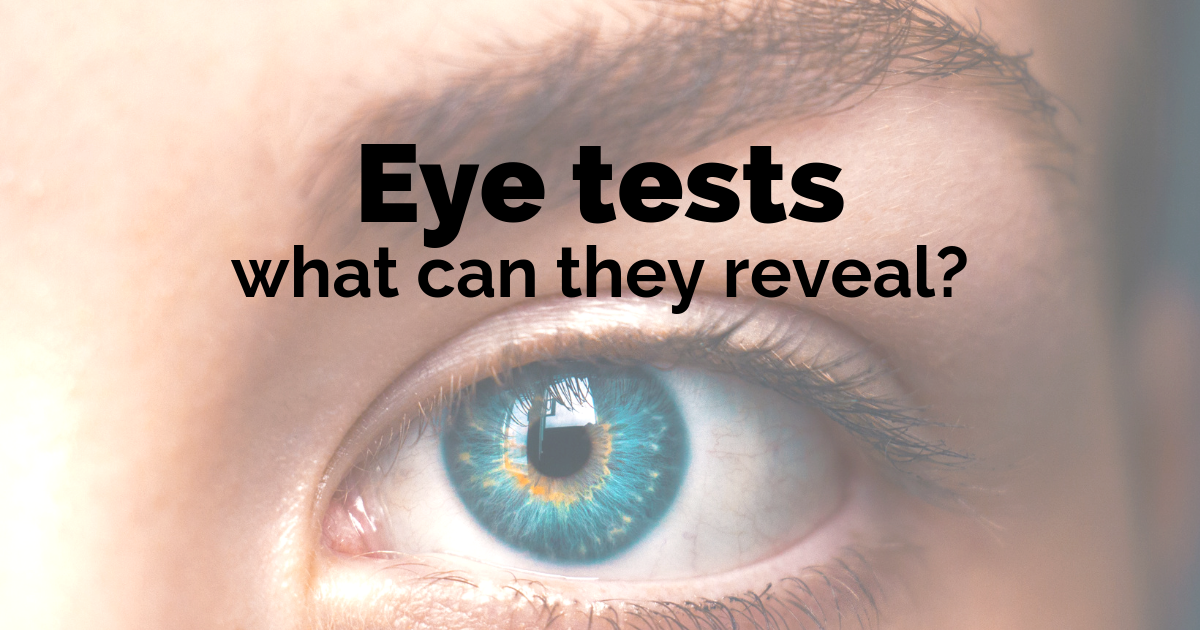The benefits of an eye test
Our eyes rarely hurt when something is wrong with them – just one of the reasons why you should have regular check-ups with your optometrist. Regular appointments help detect potentially harmful conditions.
The NHS recommends that you should get your eyes tested a minimum of every two years. Between glaucoma and macular degeneration (we’ll explain later), an eye test could reveal a serious underlying health condition. Here are some of the illnesses an eye test could uncover.
Diagnosing illness through the eyes: What can be detected in an eye exam?
High blood pressure
High blood pressure is often something that we live with without even knowing because it’s symptomless. It affects one in three UK adults and is linked with strokes, heart disease, and vascular dementia.
The signs of high blood pressure can also be spotted during eye tests. When someone suffers from high blood pressure, the force of the blood as it passes through blood vessels in the retina can cause something called hypertensive retinopathy.
Hypertensive retinopathy is where blood vessels in the retina thicken themselves to deal with increased pressure of the blood. As the blood vessels thicken, they become smaller, and tighter which eventually will restrict blood from reaching the retina. Symptoms of hypertensive retinopathy include reduced vision, eye swelling, double vision, and headaches.
Arthritis
Although most people don’t know it, arthritis can affect our eyes just as it does our joints. Eyes are not immune to arthritis! The one material that links joint inflammation and eye inflammation is collagen.
Collagen is the main component of connective tissue, and it is collagen which becomes inflamed. Certain parts of our eyes are made almost entirely from collagen – the sclera (the whites of our eyes) and the cornea (the lens cap) – rendering them vulnerable to arthritis just like our joints. There are a few arthritis-related conditions that can affect your eyes, and a few of the common symptoms include eye dryness, deep ‘boring’ eye pain, sensitivity to light, and blurred vision.
Tumours
An eye test can reveal cancers of the eye as well as tumours in the brain. Swelling of the optic nerve is a possible sign of a brain tumour and can be visible during an eye test. Symptoms relating to brain tumours include blurred vision (although this is the most common symptom for all eye-related complaints), fleeting periods of ‘greying out’ (momentarily losing vision), or feelings that you’ve lost part of your field of vision and are bumping into things.
Diabetes
Lots of people aren’t aware that an eye test can actually reveal the presence of diabetes. Similar to arthritis, diabetes can affect your eyesight (it’s called diabetic retinopathy). You won’t have any discernible symptoms to start with, so an eye test will often pick up on diabetes before you notice any change to your vision whatsoever.
What happens is that diabetes can affect the tiny blood vessels in our eyes, which damages the retina. These damaged blood vessels can leak out, which is a telltale sign of diabetes-related eye trauma.
Multiple sclerosis
Multiple sclerosis (MS) can cause swelling of the optic nerve, which then creates a visual defect called a ‘scotoma’ (a partial loss of vision or a ‘blind spot’ in an otherwise normal and unaffected field of vision.
Eyesight issues can be an early sign of MS or they can crop up long after an MS diagnosis. The condition most common with regard to MS is ‘optic neuritis’, where the optic nerve becomes inflamed (symptoms include blurred vision, blind spots, and pain when moving eyes).
Remember to book an appointment
If you’re due an eye test, don’t forget to book it!
And, once you’ve had your eyes tested, it may be time for a new pair of glasses! We’ve got loads of optical glasses online (for men and women), and you can even use our try glasses before you buy service.

 The benefits of blue light glasses
The benefits of blue light glasses Are Eye Drops Safe to Use?
Are Eye Drops Safe to Use? How do you determine which eye is the dominant one?
How do you determine which eye is the dominant one? What are the best glasses for astigmatism?
What are the best glasses for astigmatism?